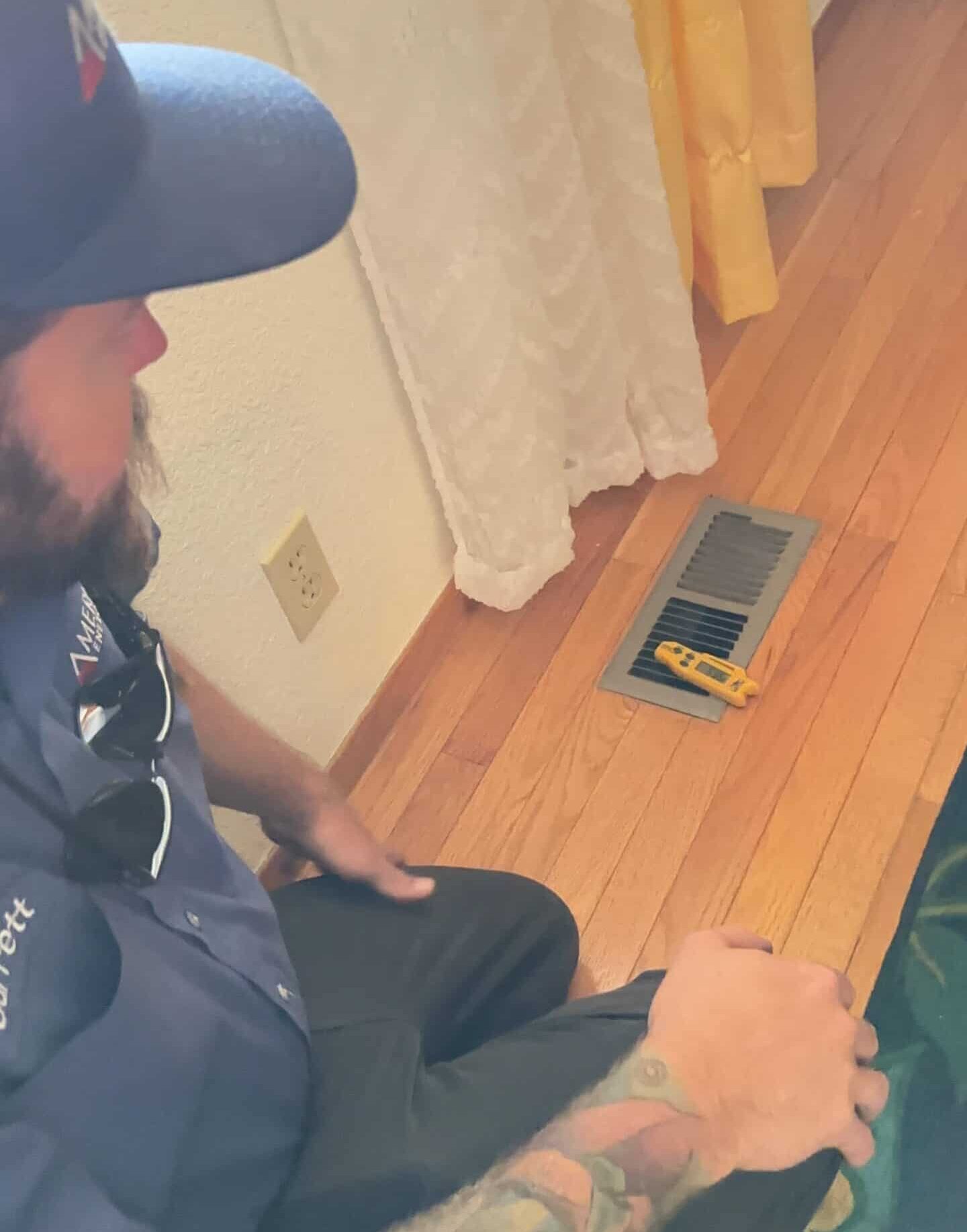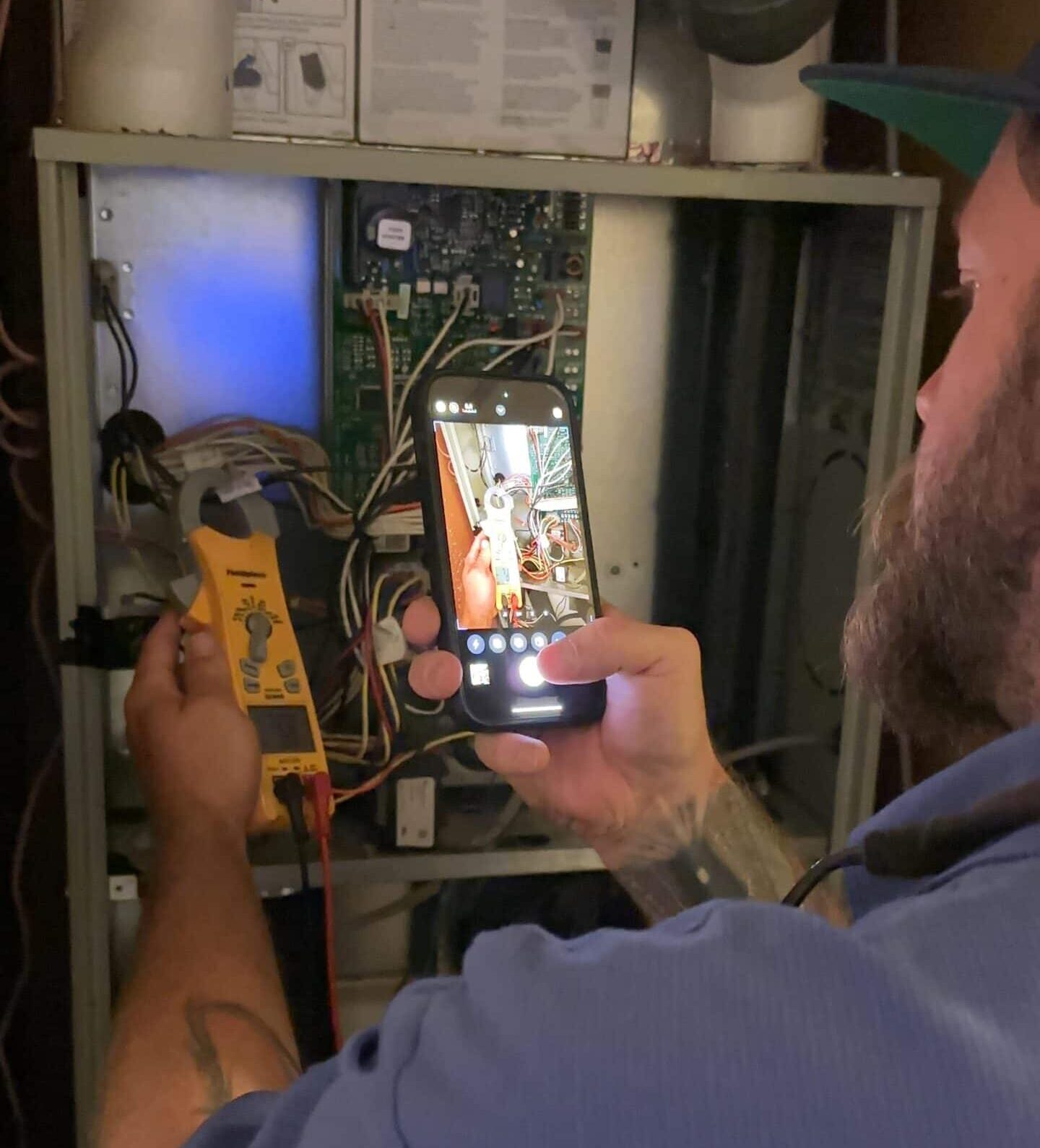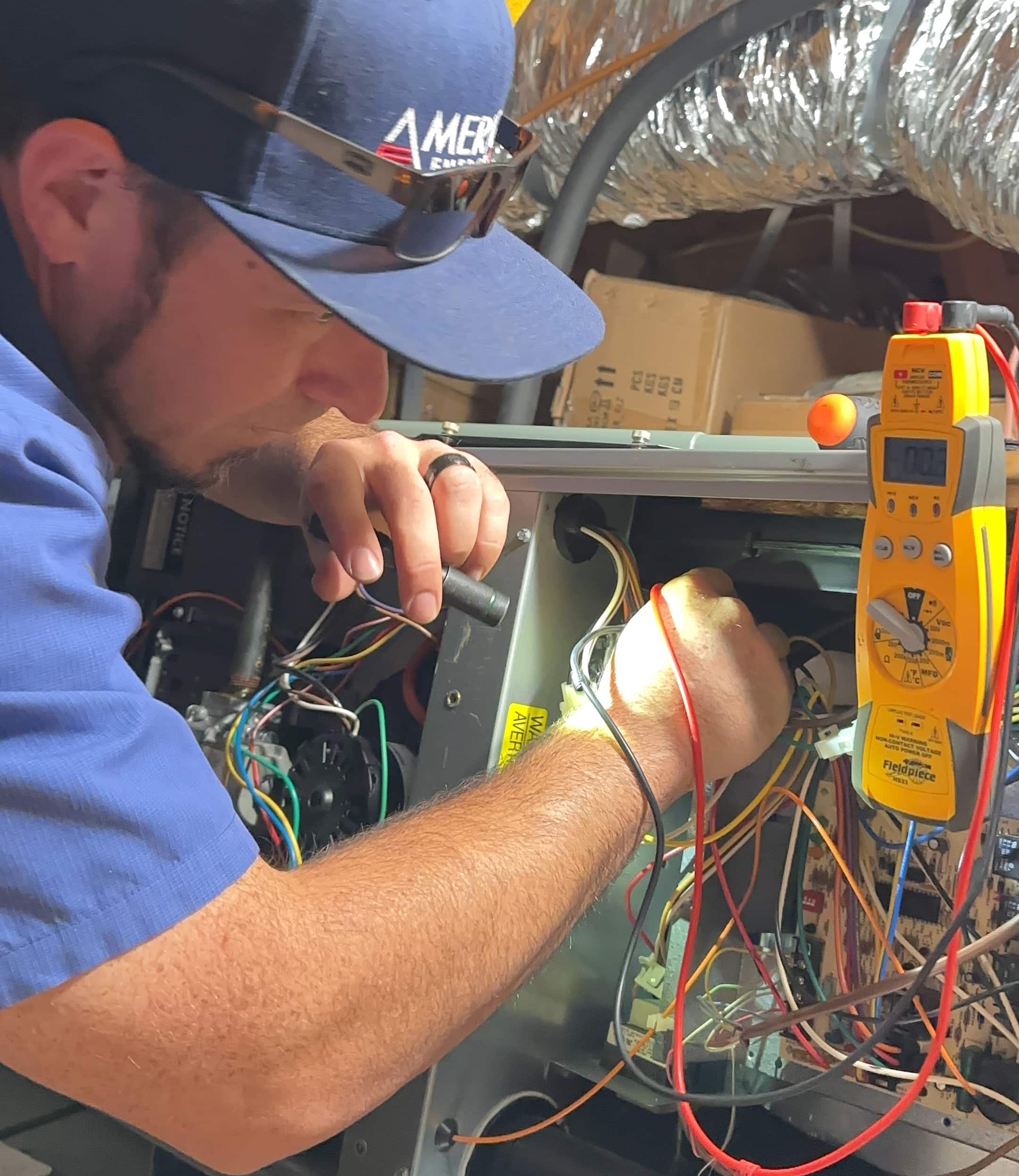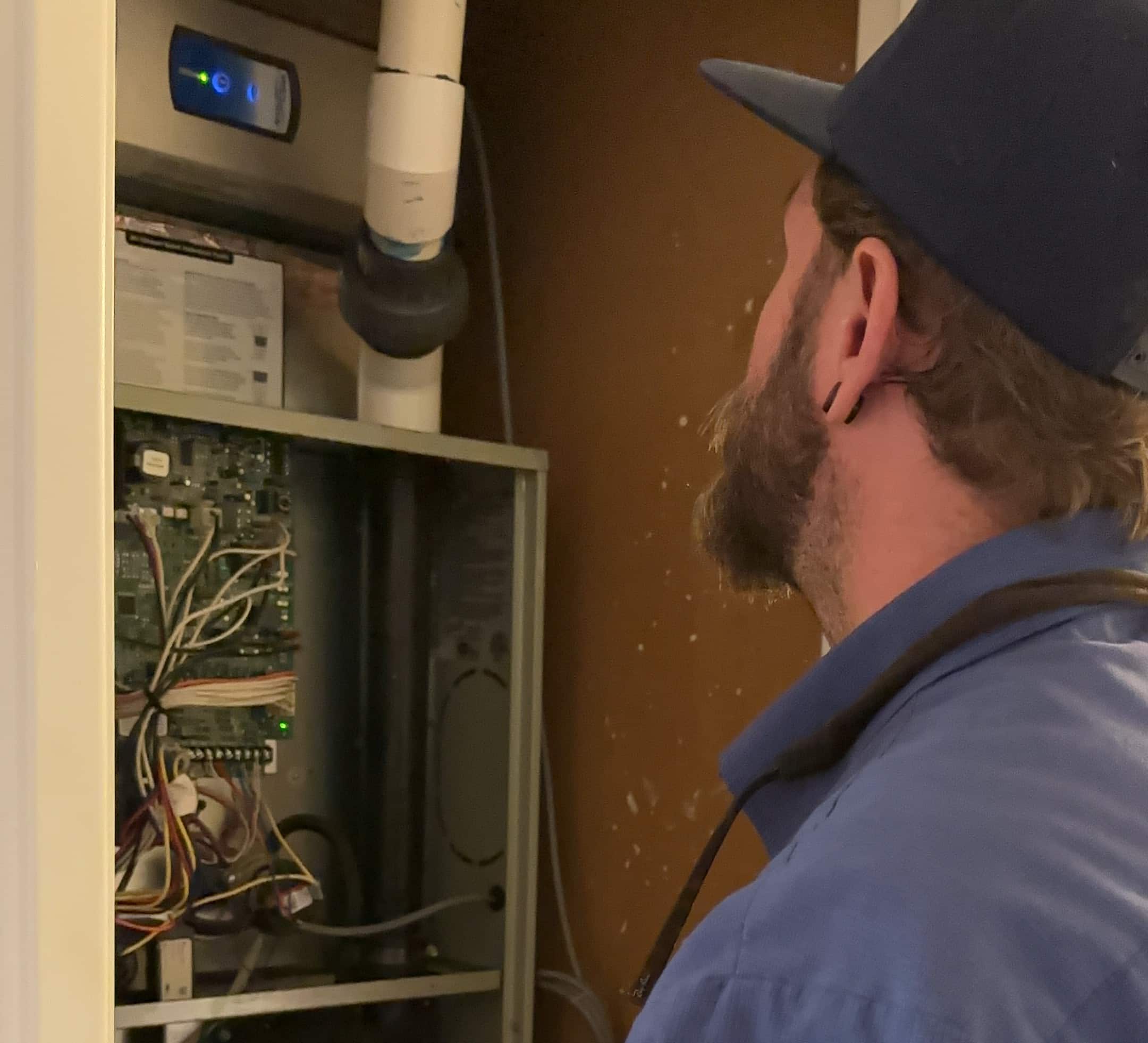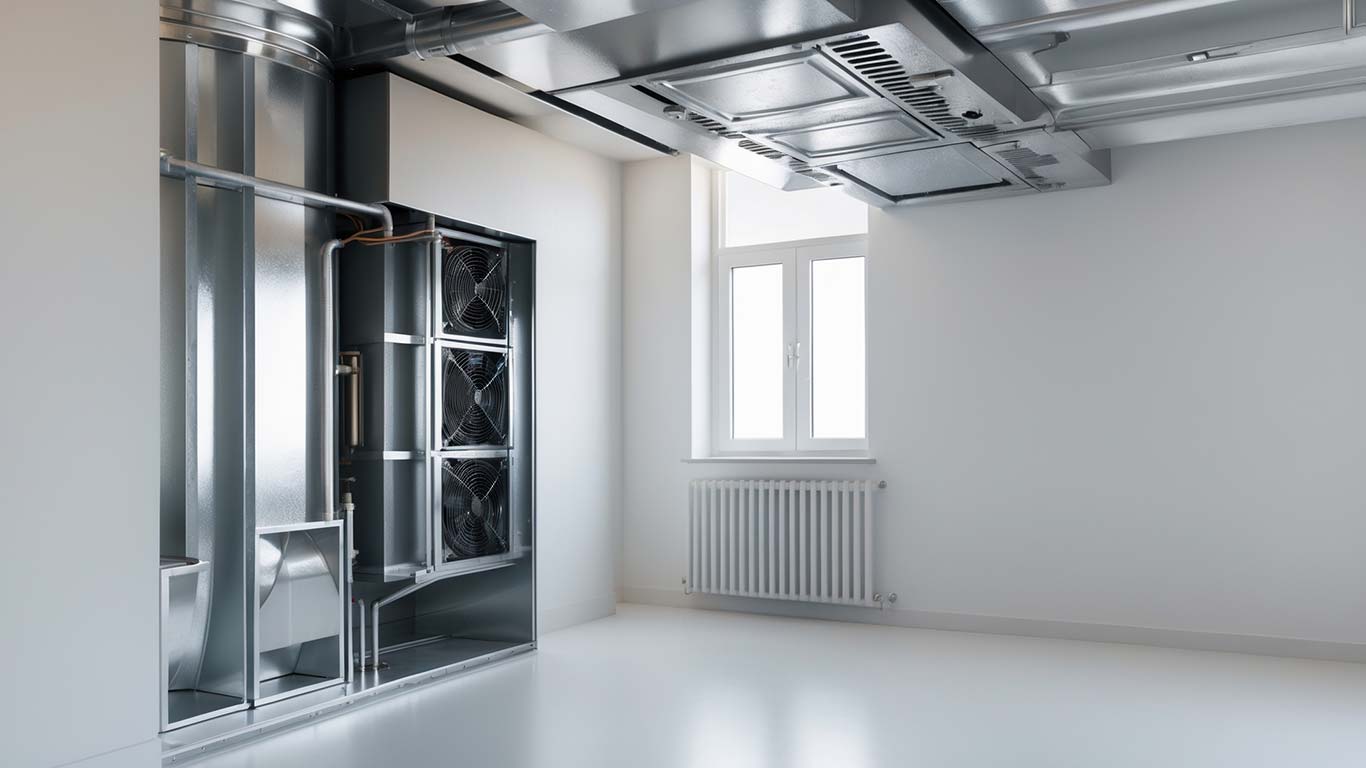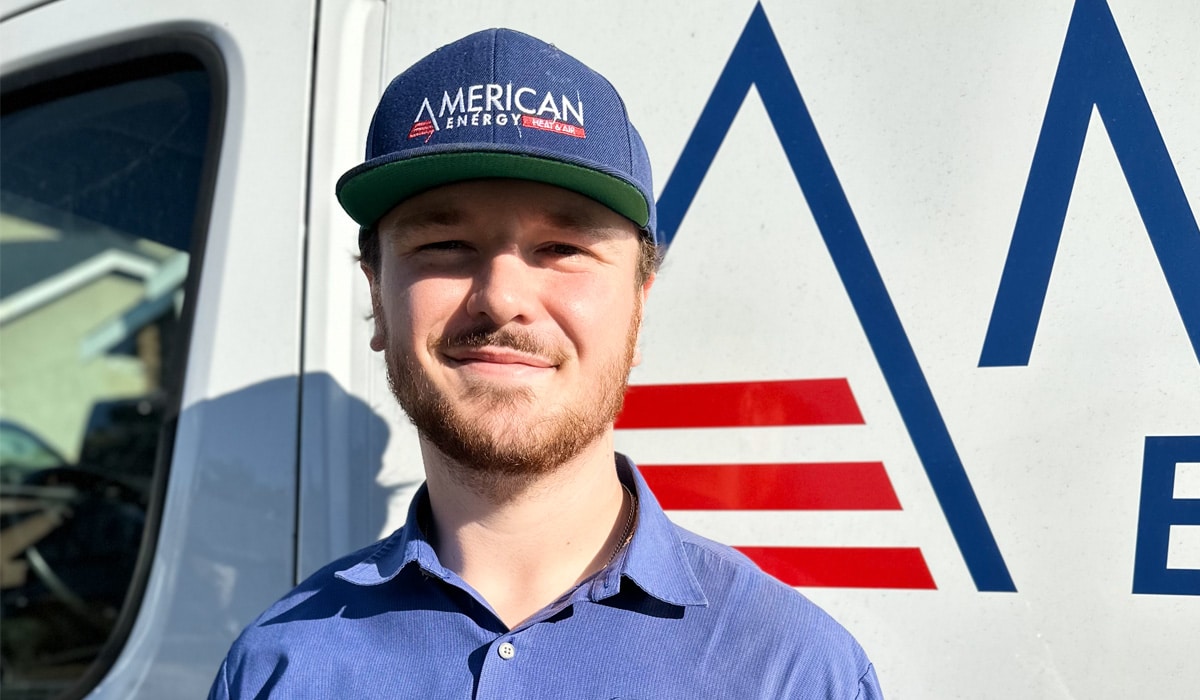Heat Pump Troubleshooting: 7 Common Problems and Solutions
A heat pump is an energy-efficient system that heats and cools your home by transferring heat between the indoors and outdoors. However, like any HVAC system, it can encounter issues over time, such as poor performance, unusual noises, or failure to operate properly.
The good news is that many heat pump problems are common and relatively simple to address. In this guide, we’ll cover seven typical issues, explain their causes, and share practical solutions to help you get your system back to peak efficiency.
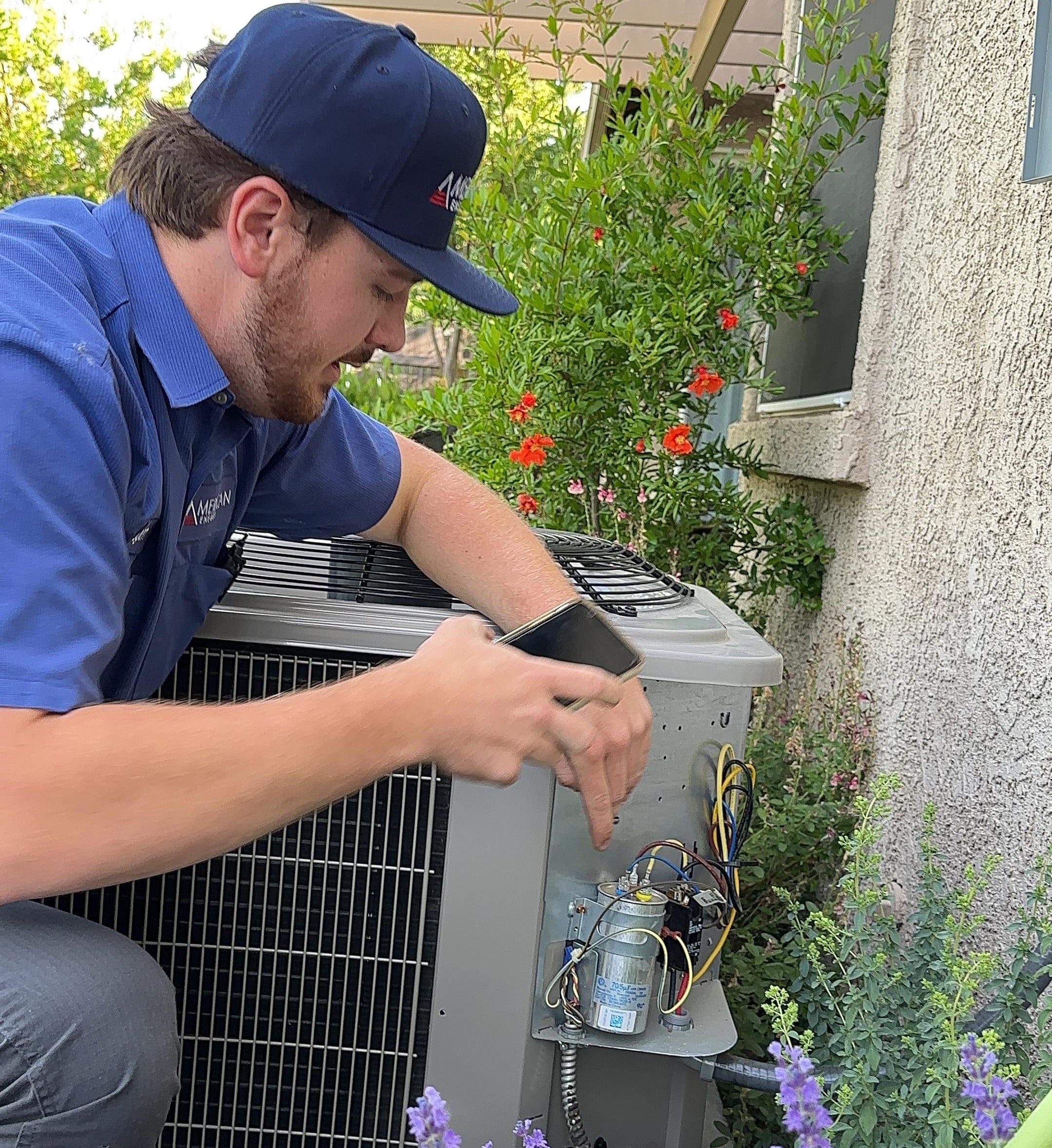
Heat Pump Problems and Troubleshooting Steps
Heat Pump Not Turning On
Common causes of a heat pump that won’t start include:
- Tripped circuit breaker or blown fuse
- Thermostat set incorrectly
- Faulty starter capacitor
How To Troubleshoot
- Check Power: Look for a tripped breaker or blown fuse in your home’s electrical panel.
- Verify Thermostat Settings: Ensure it’s in the correct mode (heat or cool) and set it to the right temperature.
- Inspect Starter Capacitor: If the unit still doesn’t start, the capacitor may be failing. This part should be tested or replaced by an HVAC professional.
Heat Pump Not Heating or Cooling Properly
If your heat pump is running but failing to keep your home warm or cool, you may be dealing with:
- Clogged air filters that restrict airflow, reducing heating and cooling efficiency
- Low refrigerant levels
- Outdoor unit obstructions such as leaves, debris, or ice may damage the reversing valve which impacts the system’s ability to switch between heating and cooling modes
How To Troubleshoot
- Check Air Filters: Clean or replace dirty filters to boost airflow.
- Clear Debris: Keep the outdoor unit free of leaves, dirt, and snow.
- Monitor for Leaks: If you suspect low refrigerant, contact an HVAC technician to check and recharge the system.
- Evaluate the Reversing Valve: If heating and cooling modes fail to switch, a professional may need to repair or replace the valve.
Heat Pump Running Constantly
A system that runs non-stop can lead to higher energy bills and unnecessary wear and tear.
This is usually triggered by:
- Incorrect thermostat settings
- Dirty air filters causing the system to work harder and for longer periods
- Insufficient or low refrigerant levels
- A faulty electrical contactor
- Extremely cold weather conditions
How To Troubleshoot
- Check Thermostat: Ensure the temperature setting isn’t too high (or too low if cooling), and verify the correct mode selection.
- Clean or Replace Filters: Clogged filters force the system to run longer to achieve the set temperature.
- Inspect Refrigerant Levels: Low refrigerant can prevent proper heating or cooling, causing continuous operation. An HVAC technician can test and recharge the system.
- Examine the Contactor: A faulty electrical contactor may keep the outdoor unit running non-stop and require professional repair.
- Consider Outdoor Conditions: In very cold weather, it’s normal for heat pumps to run frequently. However, if it never cycles off, schedule an inspection to rule out mechanical issues.
Heat Pump Making Strange Noises
Unusual sounds like banging, rattling, or squealing can indicate underlying mechanical or airflow problems that shouldn’t be ignored. Some possible causes include:
- Loose or broken parts, such as screws, panels, and fan components
- Worn or failing motor bearings
- Debris (small objects, leaves, or twigs) trapped in the outdoor unit
- Bent or damaged fan blades
How To Troubleshoot
- Power Down First: Turn off the heat pump at the thermostat and circuit breaker before any inspection.
- Tighten Loose Components: Secure any loose screws, panels, or other hardware.
- Clear Debris: Safely remove any visible obstructions or buildup around the fan.
- Check for Damage: If fan blades are bent or motor bearings are worn, contact an HVAC technician for proper repairs or replacements.
Heat Pump Freezing Up
Seeing ice on your heat pump, especially on the outdoor coil, can be alarming, but it’s often related to:
- Restricted airflow due to dirty filters or blocked vents
- Insufficient or low refrigerant levels
- A malfunctioning defrost cycle
- Debris or physical damage to the fan
How To Troubleshoot
- Check and Replace Filters: Clean or swap out dirty filters to improve airflow.
- Clear Debris from the Outdoor Unit: Make sure leaves, snow, or other obstructions aren’t blocking the coil.
- Verify the Defrost Cycle: The defrost control might be at fault if ice remains for extended periods. Consult an HVAC professional if unsure.
- Inspect Refrigerant Levels: Low refrigerant can indicate a leak; call a technician to diagnose, repair, and recharge the system.
- Power Off and Defrost Manually: Turn off the unit to allow ice to melt if the buildup is severe. Once clear, restart and observe if the issue recurs.
Heat Pump Has an Odd Smell
A strange odor coming from your heat pump can range from musty to chemical-like, potentially indicating:
- Mold or mildew
- Clogged drain pan or line
- Electrical problems such as overheating wires or motors
- Refrigerant leak
- Small animals, nesting materials, or other debris stuck inside the system
How To Troubleshoot
- Check Air Filters and Drain Lines: Clean or replace filters; ensure drain pans and condensate lines are clear of blockages.
- Inspect for Moisture Build-Up: Mold or mildew around the indoor coil or ductwork could require professional cleaning.
- Listen and Look for Electrical Signs: If you smell something burning or see scorched wiring, shut off the system and call an HVAC technician.
- Watch for Chemical Odors: A licensed professional must diagnose and repair a refrigerant leak.
Heat Pump Short Cycling
Short cycling occurs when the heat pump turns on and off rapidly, failing to complete a full heating or cooling cycle. This can lead to uneven temperatures, higher energy costs, and added wear on system components.
Possible reasons for short cycling include:
- Oversized unit may reach the set temperature too quickly, then shut down and restart frequently
- Incorrect calibration or placement of thermostat
- Clogged air filters may cause overheating or pressure imbalances
- Low or insufficient refrigerant levels
- Faulty wiring or malfunctioning relays
How To Troubleshoot
- Check Filter and Airflow: Replace dirty filters and ensure vents are open and unobstructed.
- Verify Thermostat Placement: Keep the thermostat away from direct sunlight, drafts, or heat sources that could cause false readings.
- Inspect for Leaks: If you suspect low refrigerant, contact an HVAC technician to locate and repair leaks.
- Assess System Sizing: If you consistently experience short cycling, a professional evaluation may confirm that your heat pump is oversized.
- Consult a Professional: Electrical or control board issues often require specialized tools and expertise to diagnose and repair safely.
When to Call a Professional for Heat Pump Troubleshooting
Call an HVAC professional if basic troubleshooting steps (checking power, filters, and thermostat settings) fail or if you suspect wiring, refrigerant leaks, or serious mechanical issues. A trained technician has the tools and expertise to diagnose and safely fix problems, ensuring your heat pump runs efficiently and reliably.
Take Control of Your Comfort with American Energy Home Pros
At American Energy Home Pros, we offer 24-hour HVAC service in Sacramento, CA, and the surrounding areas. Our licensed HVAC technicians (License #1083187) can diagnose and resolve all heat pump problems—quickly and safely.
Call (916) 520-9990 to schedule a professional inspection and enjoy reliable heating and cooling year-round!

